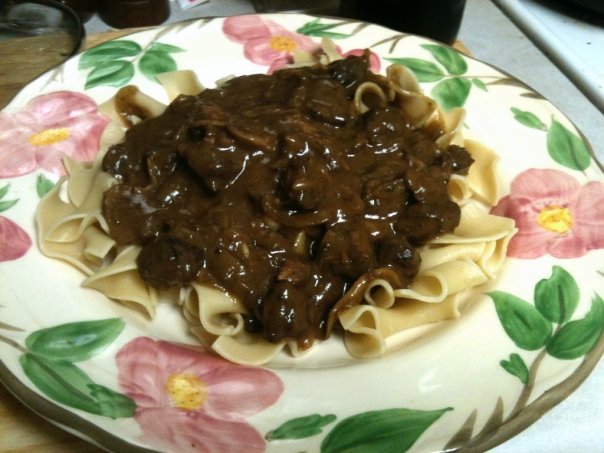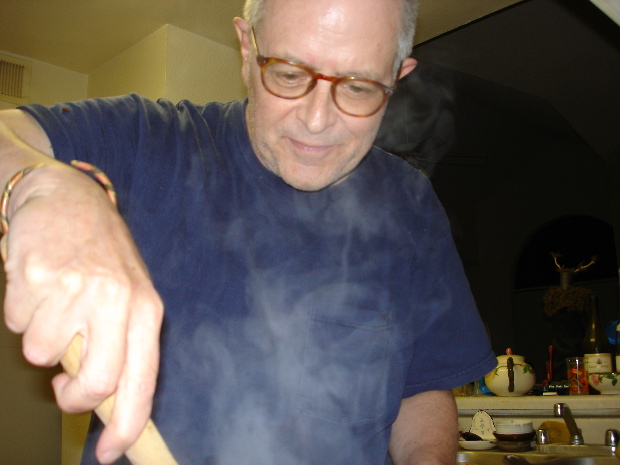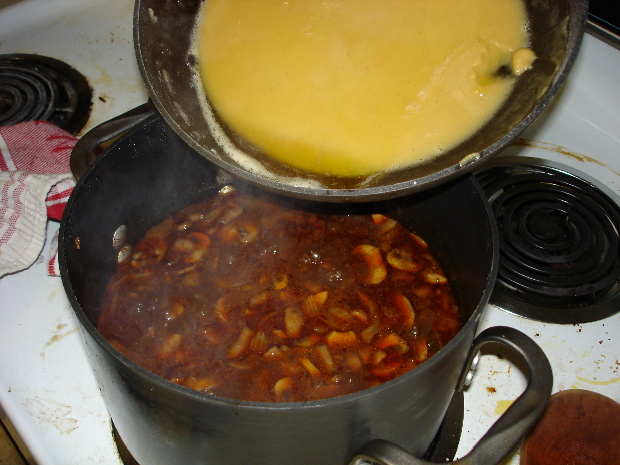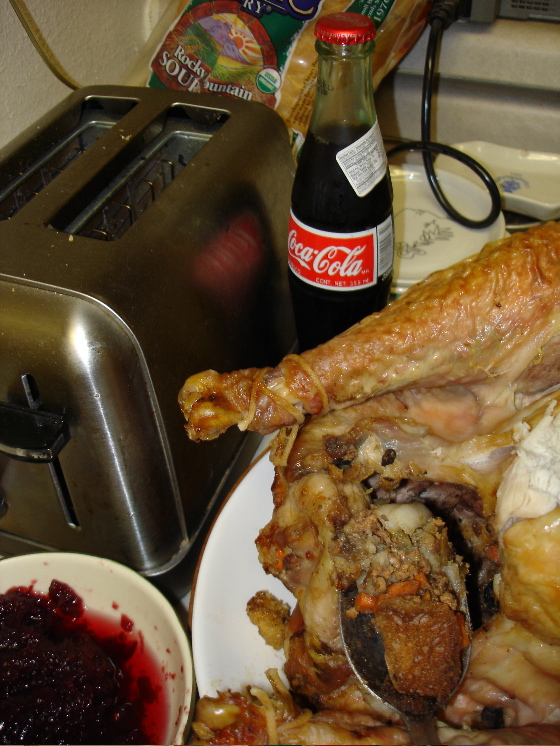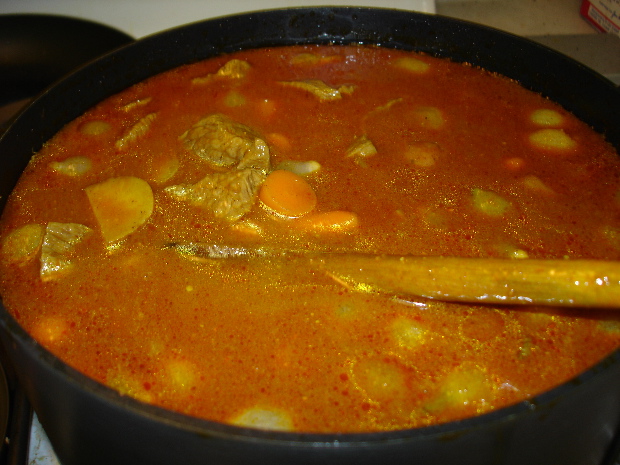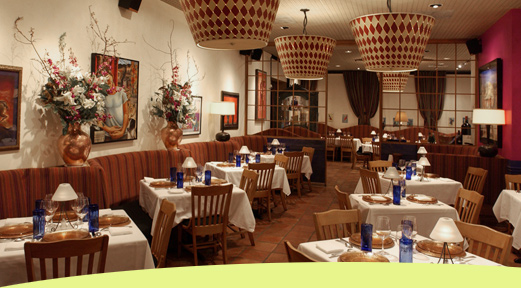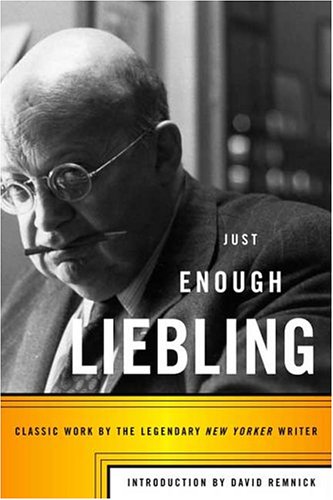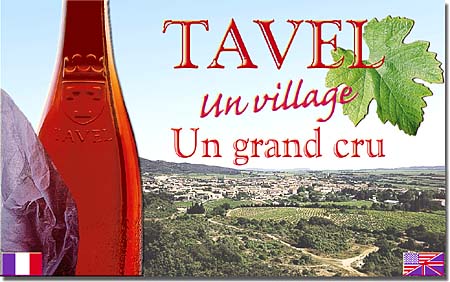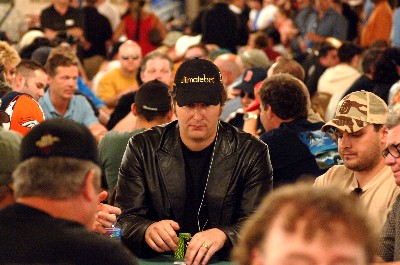There has been a restaurant at the site of the Polidor since 1845, though it did not get its present name until the beginning of the last century. Its decor has not changed since then, and it still serves hearty 19th-Century food.
Diners sit mostly at long communal tables, and used to be able to store private wine bottles in numbered cabinet drawers. It has always been and remains popular with students from the nearby Sorbonne, and with struggling artists. James Joyce was an habitué — Hemingway and Kerouac dined there. It is a place one goes to commune with literary ghosts, and with the Paris of an earlier time. I can't remember what I ate when I went there, but it's the sort of place where you would want to try the cassoulet.
My friend Coralie visited Le Polidor recently, and took wonderful photographs of it. She arrived after the lunch hours and before the dinner hours — the place was deserted but charged with expectancy. It reminded her of visiting a theater before the arrival of the audience. Here is her report about it:
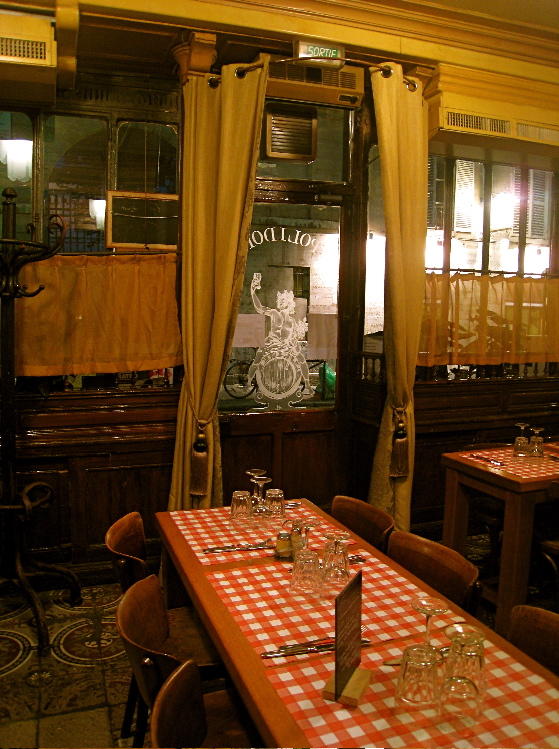
Le Polidor — Dans Sa Loge
Il n'est pas encore 19 heures, lorsque je remonte la rue Monsieur Le
Prince. Je me trouve arrivée devant Le Polidor sans l'avoir remarqué
car l'enseigne indique une ancienne crèmerie. Je pousse la porte du
bistrot. La salle est vide, pleine d'absence. Mais en regardant de
plus près, je réalise que je me trouve dans l'intimité de sa loge. Je
m'assieds sans bruit aucun, me fondant dans le décor.
Je ne suis pas
sensée être là, et pourtant chaque objet, les tables dressées où
tiennent quelques dizaines de couverts, dès lors que mon regard
s'approche, me susurrent à voix basse leur texte respectif. Il me
semble saisir des fragments de conversation traversées par des rires
enthousiastes, tandis que les mets, petites oeuvres picturales
s'apprêtent à vivre leur éphémérité. La chaleur humaine m'enveloppe
dans un bain de lumière, — de ce côté de la rampe. Fouillant du regard
l'espace environnant, je pénètre le sombre du fond de la salle. Une
pièce massive de bois tachée de mosaïques me rappelle la cuirasse de
l'armure des samouraï.
M'enfonçant dans l'effet magique du
clair-obscur, je découvre un coffre plein de trésors, avec sa myriade
de petites pièces d'or incrustées. Délicatement je fais glisser un
petit tiroir afin de ne pas déranger le script. Jacques Lacan, le
célèbre psychanalyste décrivait cette métamorphose… lorsque l'objet
devient une chose. Je respire à peine, afin que du fond des cuisines,
ma présence ne soit pas soupçonnée. Soudainement, je suis frappée
d'enchantement.
Dans chaque tiroir loge un petit monde qui fait fi du
temps. L'âme de son hôte y séjourne toujours. Je suis comblée par
cette découverte : Nowhere… Now Here. Maintenant je dois vite quitter
ce petit théâtre du monde, et laisser la représentation se donner.
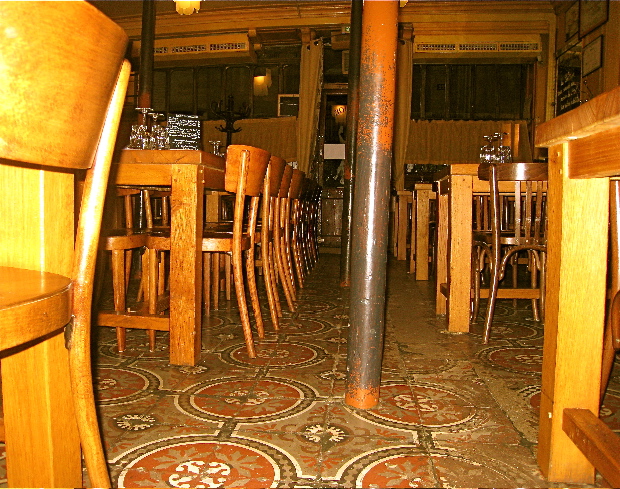
Me dirigeant vers la sortie du Polidor, je sers précieusement tout
contre moi, la richesse du trésor qui désormais, m'anime. Plus que
quelques mètre de carrelage et je suis dans la rue. Tirant doucement
la porte derrière moi d'un geste assuré, j'efface ma traversée des
lieux. Afin de marquer ce vécu du sceau de la spatialité, je me rends
attentive au seuil qui me sépare de l'autre réalité. Ce dernier acte
se livre comme une sacralisation de ce qui m'a éprouvée.
Je prends deux ou trois clichés 'du dehors'. La pénombre a l'épaisseur
du rêve.
[All photographs © 2009 Coralie Chappat.]

